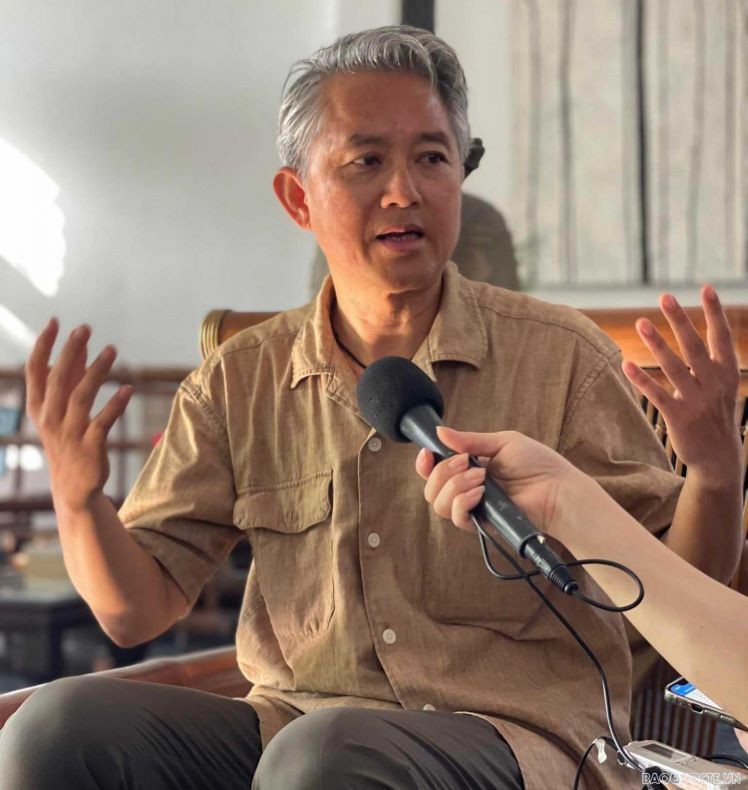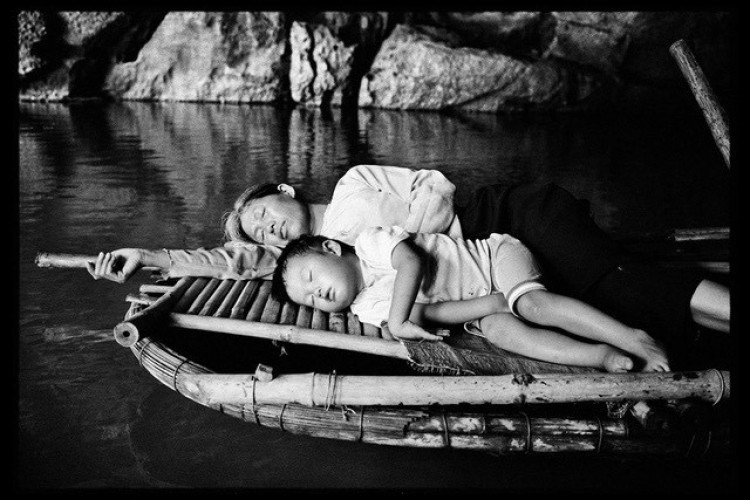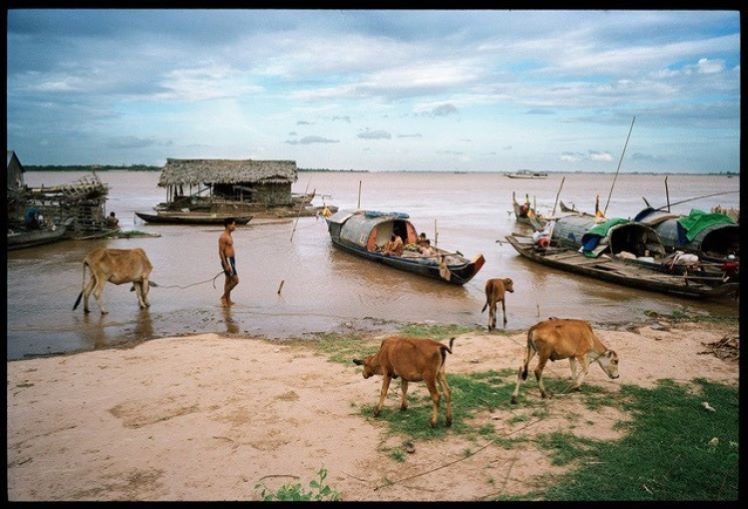
Mekong River is very special to me: Photographer Lam Duc Hien
Latest
 |
| Photographer Lam Duc Hien. (Photo: Nguyen Linh) |
Lam Duc Hien was born in 1966, on the banks of the Mekong River (the section that flows through Pakse, southern Laos), to a Vietnamese father and Lao mother. He went to France in 1977 after living for two years in a refugee camp in Thailand.
His childhood was fully associated with his grandmother and the Mekong River (the river flows through Vietnam, Cambodia, Laos, Thailand, Myanmar, Tibet, China).
Though life if full of upheavals, Lam still keeps in mind all the memories of his childhood in Paksé.
His paternal grandmother was a Vietnamese woman from Hoa Lu, Ninh Binh province, who became an evacuee because of war.
One day, the photographer expressed his wish to visit his grandmother’s hometown. And they had a memorable journey…
Back to hometown
Spending two years studying the Vietnamese language, Lam Duc Hien then turned to pursuing art and studied painting, photography and even sculpture.
From the very beginning, he himself never thought of becoming a photographer. However, upheavals in life brought him to the job.
Lam Duc Hien used to be a refugee. He grew up in the chaotic war period. His tumultuous childhood not only brought him experiences, but also became a powerful catalyst in his life and career.
He can be seen as a witness of the biggest conflicts of the twentieth and twenty-first centuries in many countries, such as Romania, Russia, Bosnia, Rwanda, South Sudan and most notably, Iraq - where he had lived more than 25 years and also had two near-death times.
As a war reporter, Lam Duc Hien often forgot the feeling of fear. However, after two near-death experiences in Iraq, he felt scared. He asked himself what he would do if he didn't take pictures when returning to France.
Long after putting down the camera, Lam Duc Hien suddenly realized that he wanted to do this job to death. It was during the return to Laos and once again living with happy childhood memories. “I love this job so much, I have to return to photography and the Mekong project. The story of the two banks has brought me back to my passion”, shared the photographer.
Lam Duc Hien recalled his returning home with his grandmother in Hoa Lu. The trip left him with the most emotions.
He was surprised when, in Hoa Lu, many people around recognized his grandmother. "They just hugged us tightly. On that day I really received love and pride - the bond between Vietnamese people anywhere in the world," the photographer said.
During a month in the ancient capital of Hoa Lu, he spent a lot of time with his grandmother, with the familiar tastes of the cuisine of his homeland and listening to stories about Vietnam.
 |
| The photo of a woman and her child sleeping on a boat in Ninh Binh was captured by photographer Lam Duc Hien during his trip back home to Vietnam. (Photo: Lam Duc Hien) |
For Lam Duc Hien, it was a precious time to rediscover his childhood, and at the same time admire and fully capture the peaceful beauty of his homeland in photos.
In Ninh Binh, he captured the moment a woman and her child were sleeping on a boat and the photo has been exhibited many times.
On the homeland journey, Lam Duc Hien rediscovered many childhood memories. The image of a Vietnamese woman in Can Tho seemed like a slow-motion movie many years ago. On that day, he was a traveler on a boat rowed by a woman. In the hot and humid air of the Mekong Delta, the woman who steered the boat lifted her oars and sang a local melody. “Under the bright red sunset, that passionate melody made such a strong vibration in me that I thought that I was living in a movie or a book," Lam Duc Hien recalled.
Years of life experiences on the battlefield of bombs and bullets had restrained his tears from falling before the footage of his childhood.
It was an indescribably familiar feeling, like in the moments his grandmother told him stories about life in Vietnam, an emotion that led Lam Duc Hien back to his childhood through Vietnamese songs.
Photography gives hope
Lam Duc Hien does not think that he is a photojournalist, much less thinks that photography is a job to earn a living. For him, photography is a means of propagating the causes and documenting the consequences of the senseless wars somewhere out there. He considers himself a traveler who uses images to describe reality, express his subjective views and emotions.
When enjoying Lam Duc Hien's photo projects, viewers seem to find the people and stories around them.
They are stories about refugees and lives in war, violence and injustice. It seems that revealing the happy and sad stories of each character in the picture is a way for Lam Duc Hien to share his memories of his family and childhood.
 |
| A photo from the project "Story of the two banks". (Photo: Lam Duc Hien) |
In each photo, Lam Duc Hien always spends most of the time meeting, observing, listening to and understanding the characters, seeking empathy as "they are telling other people's stories, from their own stories".
“I feel myself in those stories. Perhaps my life already has many lives,” said the photographer walking along the banks of the Mekong River.
During his most recent return to Vietnam to participate in the program Idiosyncratic & Extraordinary: Photo camp with Lam Duc Hien within the framework of Hue Festival 2022, Lam Duc Hien shared with young Vietnamese photographers: "In order to capture the lives of people on both river sides, the photographer does not have to use the local language. When taking pictures of foreigners, if you don't know the local language, you can use body language to communicate. Let's get to know the character somehow. As long as you are familiar with the characters, you can easily take their portraits."
“When taking photos, I use all of my senses to feel. By listening, I find emotions. Through the voice, I can know if the person is sad or happy. By smelling, there might be a memory awakened through the scent. There are photos that cost us many years to take," Lam Duc Hien said.
He hopes that young people who love photography will take pictures with positive messages. Although he mostly photographed war and war zones, not being able to avoid witnessing the grief, he personally rarely took photos of the dead.
For Lam Duc Hien, photography is not about showing human suffering. He believes that the photos must give hope. "No matter how difficult it is, there is still hope. To be alive is to have hope, to have strength and to overcome fate", the photographer said.

















